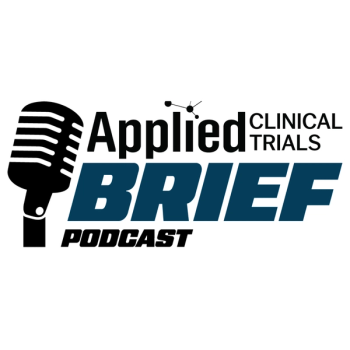
Scaling Recruitment Across Therapeutic Areas and Regions
Discover why strategies must vary by indication and geography and how data-driven matching with supported referrals can outperform site expansion and generic advertising.
In a recent video interview with Applied Clinical Trials, Matt Holms, vice president of sales at Citeline, discussed the persistent barriers slowing patient recruitment and how technology and data-driven strategies can help modernize clinical trial operations. He outlined factors such as site performance variability, investigator scarcity, and protocol complexity as key contributors to trial delays, emphasizing the need for more realistic protocol design informed by real-world data. Holms explained how AI and tokenization can strengthen patient–protocol matching, streamline feasibility, and support responsible data use. He also highlighted the importance of therapeutic area–specific recruitment approaches, sponsor-led site selection oversight, and engagement with non-research healthcare providers to expand patient access—calling for greater industry collaboration to create a more efficient and equitable recruitment ecosystem.
The below interview transcript was lightly edited for clarity.
ACT: Recruitment strategies often struggle to scale across therapeutic areas and geographies. What approaches are helping overcome that challenge?
Holms: Yeah, so the idea that you’re going to recruit your study with the database of patients that exist at your sites—I think many people are starting to realize that’s just not reality. You have so many sponsors; there’s only a finite number of sites that are considered the good sites. And those sites are businesses. They want to take on as many studies as they can, typically.
So that approach of just adding sites when recruitment doesn’t go well is still very often deployed, but typically it’s not moving the needle enough. I would say that traditional direct-to-patient advertising, central campaigns—there’s different nomenclatures for this—started to become more mainstream about maybe 15 or 20 years ago. I’ve worked in the space for a long time. We managed a lot of direct-to-patient campaigns. We were very successful in them. I’ve probably seen hundreds of campaigns.
The reality is that they work for certain indications. So when you talk about where the struggles are, it really comes down to the therapeutic area. And if you haven’t really worked in recruitment, it’s not as intuitive as many realize.
I’ll give you a great example. If I’m doing a recruitment campaign for, say, back pain or diabetes, and you are on Facebook and click on a banner ad that you have back pain, you will then be presented with an option to say, I’m willing to consent and share my information and go through a pre-screener of IRB-approved questions—maybe eight to ten questions that are tied back to that protocol’s criteria.
Now, Andy, you need to be able to answer those questions. I can’t ask you something clinical that you don’t know the answer to. So the more comprehensive the protocol’s inclusion/exclusion criteria, the more difficult it is to ask those patients, when they respond to outreach, what the answers to those are.
For example, in diabetes, you might not even ask somebody what their A1C is—even though they all might know what their A1C is. You may have a patient with a very high A1C who’s just not educated in what an A1C is, and so you may not want to lose that patient through the process.
There are layers of services that can be added on to this direct-to-patient approach to further qualify the patient before you send them to the site. You could have a secondary nursing group that does medical pre-screening—it’s still an IRB-approved discussion. You could get the EMR records and send those to the site.
But the reality is that sites are very overburdened. They’re understaffed. These types of campaigns—the more the questions in that pre-screener cover the protocol criteria, the more qualified that referral is, and the more beneficial that is for that coordinator when they receive it. When they get a referral that doesn’t cover a lot of the protocol criteria, they start to turn off. They then have to go through the EMR. It’s a lot of work.
The other piece that often causes this to struggle is that direct-to-patient campaigns typically aren’t deployed prospectively by sponsors. They want to see how things go first. If it’s not going well, they’ll add sites, and then they’ll come back to a recruitment campaign.
Now, when you look at clinical trial agreements—the CTAs that the sponsors and the CROs will sign with sites—certainly there are administrative costs built into that, and it outlines exactly what they get paid for recruiting patients. But often those clinical trial agreements do not have anything in there for remuneration for the extra time and materials that site staff have to devote to processing those external referrals, which are typically implemented when the study is not going well.
So you’re adding support to sites but not remunerating the site. From a sponsor perspective, I think more sponsors are trying to be aware of that because it is an additional effort and cost for sites that are already overburdened and understaffed.
Just tying it back to therapeutic area plays a huge role here, because direct-to-patient recruitment really is a great fit when it’s something like obesity or healthy volunteer vaccine studies, where you have to get a lot of patients quickly. It has other indications and therapeutic areas where it can be beneficial, but the reality is that when you get into oncology, rare disease, and other indications with complex criteria—like gene mutations, biomarkers, and lab values—that’s where it’s very difficult, because those are the reasons patients aren’t qualifying.
So the shift to using the combination of real-world data and proprietary data that’s been tokenized, where you can then do protocol matching and qualify who actually matches a protocol before you even go to that patient and identify where they exist in a moment in time, is really where the market’s moving.
We’ve been able to do this more extensively in the US because, again, we have access to data at the patient, disease, and provider level, whereas in the EU you have GDPR rules that restrict being able to get visibility below the healthcare organization level.
When you get into other geographies, the direct-to-patient approach and the real-world data approach outside the US are less comprehensive. That doesn’t mean certain geographies can’t be beneficial. For instance, in South America, it typically takes a long time to get set up, but then they enroll very strongly.
Hopefully that helps address some of the struggles with respect to the therapeutic area, because I think that’s a big part of it. Any recruitment company needs to have a very focused, therapeutic-specific strategy. It matters, because each indication can change how you take your approach.
Newsletter
Stay current in clinical research with Applied Clinical Trials, providing expert insights, regulatory updates, and practical strategies for successful clinical trial design and execution.




